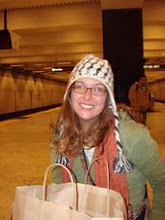The excitement and discovery of my new home helped keep my tired eyes open. I managed to stay awake thanks to Diana, a VSO volunteer and physiotherapist who is working at the Creative Self Help Centre where I will also be working. She picked me up from the airport, where the luggage was simply placed on a table under a shed on the runway, with a huge bottle of water--a key essential in this heat! And thank goodness because I slept through dinner at the hotel in Port Moresby and I was absolutely parched and starving. We drove directly to the Madang Lodge

where I will be staying until Monday while my flat (so British eh?) is being prepared. We ate a breakfast of cereal, toast and fresh fruits including bananas, pineapples, passion fruit, oranges, and papaya. After our breakfast by the sea, we drove to the market. Never had I seen such an expansive variety of fruits and vegetables. You could get anything from coconuts, pineapples and avocadoes to broccoli, ginger and sweet potatoes. And they were so enormous and colorful! Cultural lesson #1-Do not step over the food, do not let your skirt fall over the food. It is important to walk around, especially women. Simple enough I thought. Well, that was before I entered the massive span of the Madang market filled with vendors from all areas of PNG. The people from the Highlands, Sepik and Island Provinces come to sell their various crops. The market was crowed, we came on its busiest day. People were carrying huge bags which were strapped across their foreheads. In Zambia, women carry things on their heads but here in PNG women carry things in bags called bilums. Bilums are woven from vines found in the rainforest and they are dyed bright colors of pinks, purples and blues. Each province has a distinct pattern and one can tell where you are from by the bilum you carry. I quickly discovered walking around the market was much more challenging than expected. It meant walking single file while others manage to push their way through carrying huge bilums, often times bigger than them. Nevertheless, the trip to the market was enjoyable. It was clean, odorless, and the prices were clearly marked. In Zambia, I didn’t really care for trips to the market. They were dirty and always reeked with the smell of kapenta-a dried sardine type fish. In Zambia, only women sold food in the markets, whereas here in PNG both men and women are seen.
Later that afternoon, while hanging at Diana’s house wishing for a breeze to come through the window, a young boy came by selling fish. These fish were beautiful, an electric blue and pink color. We referenced Diana’s Reef Fish of PNG book and decided they were parrotfish. It was difficult to tell which type of parrotfish they were because there are 75 species of parrotfish and the males and females usually have dramatically different color patterns. Parrotfish typically inhabit coral reefs and most species are small. But the humpheaded parrotfish can be as much as 45 kg. Interesting fact: they are usually harmless but large sleeping parrotfish are potentially dangerous if suddenly awakened by night divers. In one documented case, a diver was nearly knocked unconscious from a heavy blow! Cultural Lesson #2- When preparing a fish remember the cheeks are best! As westerners we chopped off its head, but reportedly the cheeks are considered the best part. Day one and here I am gutting and scaling a fish which happens to be the most beautiful fish I have ever seen. Thank goodness I did not meet this fish on a night dive!







No comments:
Post a Comment